We all should leave our comfort zone, I read this advice all the time. But why? Why not doing the exact opposite, seeking our comfort as often as possible? Isn’t that good to feel safe and secure, to use this confidence to evolve ourselves? – Well, I don’t really want to start an argument about this topic. I just want to devote an article to a small village in northern Germany, located roughly 55 kilometers northwesterly to my home. This rural district with its agricultural landscapes constantly inspires me to take photographs.
Hamil-how-sen
Hämelhausen is the place where my girlfriend’s parents live. In the past, we visited them almost exclusively on festive occasions: for birthdays, at Christmas and at Easter. These days were pretty much packed – leaving me with no time for photography. What a pity! I remember how I sat in the car of my “father-in-law” (he used to pick us up at the train station), watching the landscape with a heavy heart. I would have loved to stroll around the fields, the small roads and the rural dwellings.
However, this situation changed at Easter 2018. After lunch, we went on an extensive walk through the place and a forest, in the middle of which a half-timbered house was hidden. On this occasion, my parents-in-law realized how much I enjoyed photographing around their home – and invited us to stay for a few days. Indeed, that was an offer I couldn’t refuse – and have taken up many times since then.
Over the last one and half years, I shot several hundred images at Hämelhausen and the surrounding area. I used color negative film as well as black-and-white film, in roughly equal shares. Therefore, I decided to split this post into two parts – this is obviously the black-and-white one. Initially, I had chosen black-and-white film over color just to cope with the expected harsh light at midday in summer – however, I pretty much like the monochrome representation and have continued to occasionally use this type of film.
Architecture Found at the Countryside
Many people in this area earn their living with agricultural products, dairy or pig farming. Hence, the villages are shaped by farm houses, stables and barns. Some of the buildings are very old, built even centuries ago. These ancient ones often show the pride of their owners whereas the post-war buildings appear solely functional. Although I appreciate the beauty of the old farms, I don’t really “trust” them in my photography – nice looking houses result in nice looking images. This kind of reservation is similar to one I perceive when visiting a popular sight. I feel rather drawn to the unpretentious architecture that wouldn’t be printed on a postcard.
Taking photographs of agricultural architecture differs from taking of photographs of urban architecture. In these small villages, everyone knows everyone. As a stranger, I feel as if there is always someone watching me. The fact that I carry a camera with me won’t make me any less suspicious, on the contrary. And why does anyone want to snap a picture of a rundown shed?
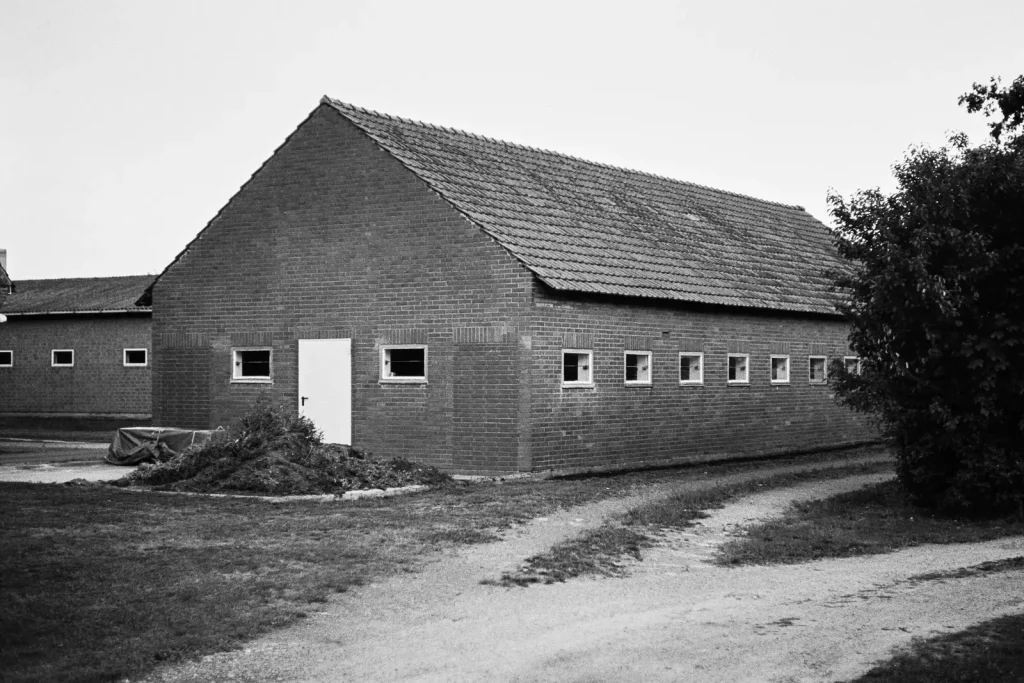
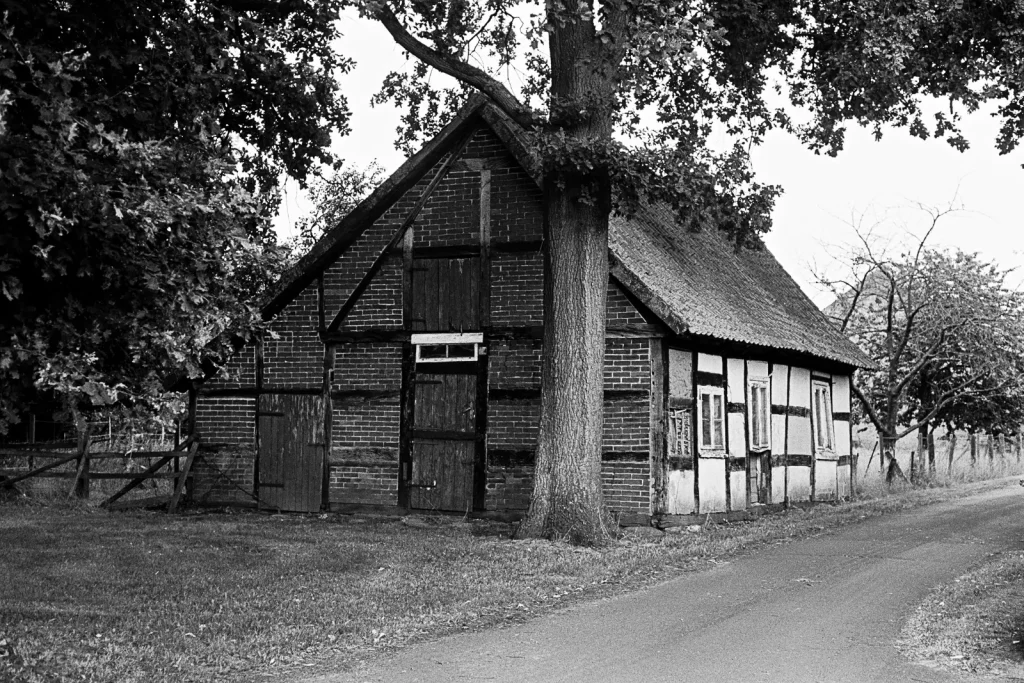
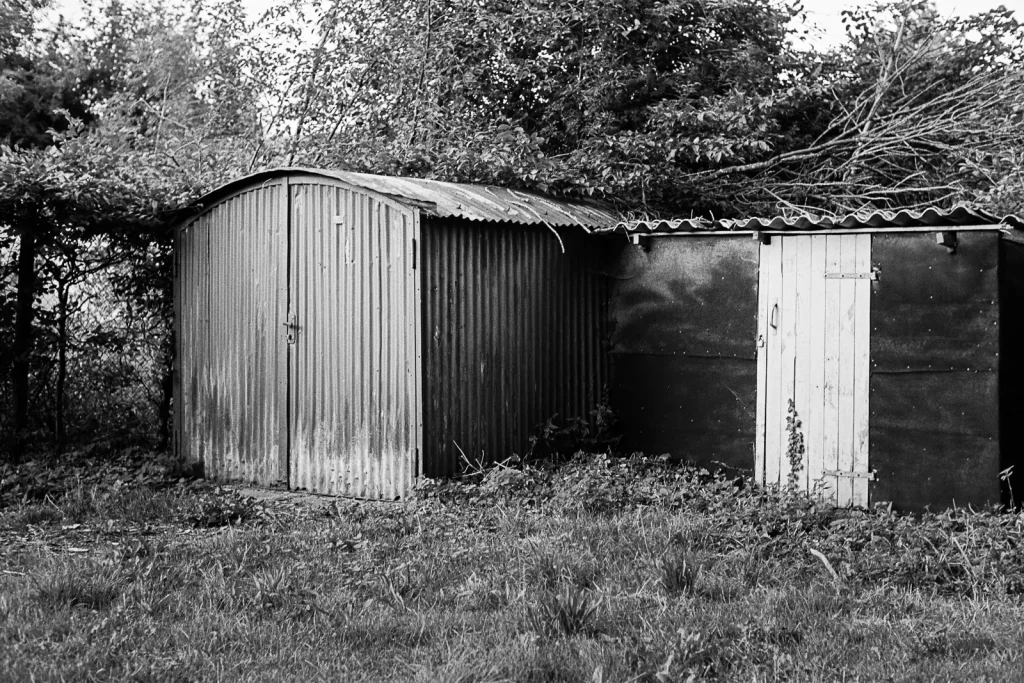
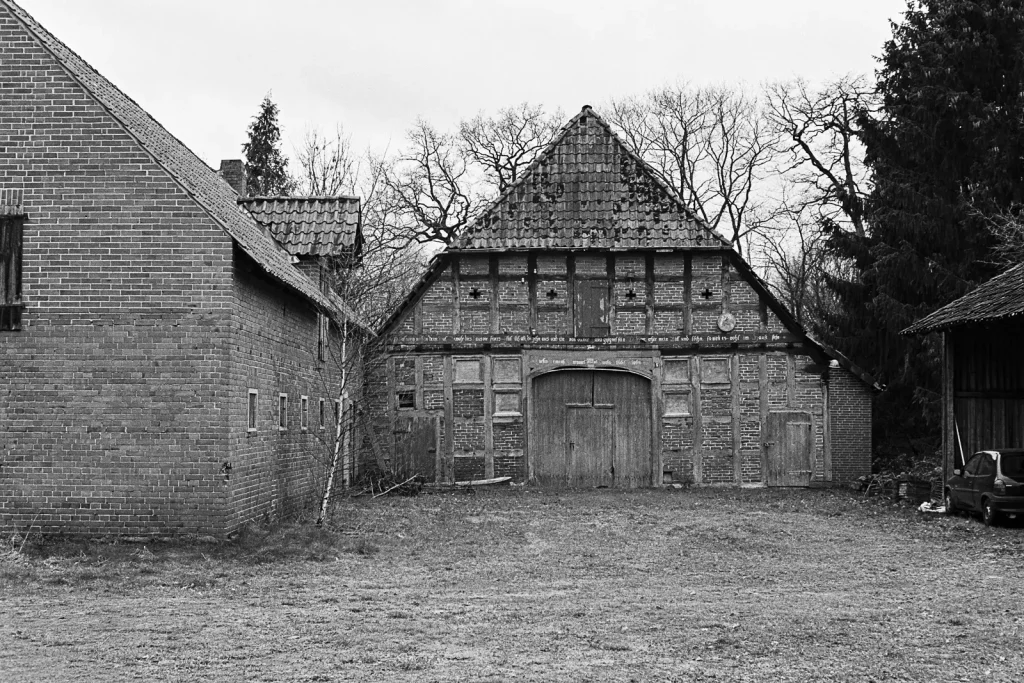
Agricultural Landscapes
Agriculture does not only shape the villages, it leaves marks on the landscapes, too. The state of the vegetation allows me to determine actual season, mostly even the actual month – just by having a look at the fields. Of course, there are other seasonal changing elements, mostly interconnected: weather, colors, light. This is a strong contrast to the city I live in, where the changes throughout the year turn out rather subtle (or at least I am not that sensitive to them?).
I took many of the images shown here during July and August. This is a time, when I encounter straw bales all over the place. This is good, because: I love them! It’s so much fun photographing them – trying different angles, distances and backgrounds. In the beginning, the bales are lying evenly distributed on the field. That allows a sheer endless number of possibilities to position them within the frame – like a kaleidoscope. Later, the bales are piled up, sometimes in endless rows. And even later, the stacks get covered with tarpaulins. Did I mention how many photographic opportunities these chunks of straw offer?
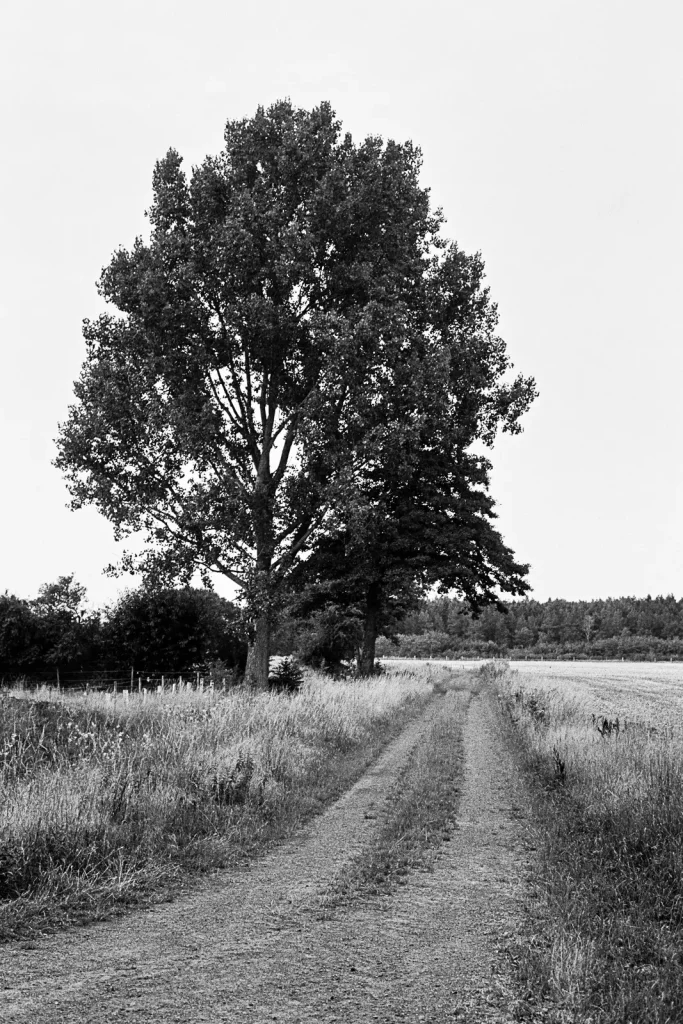
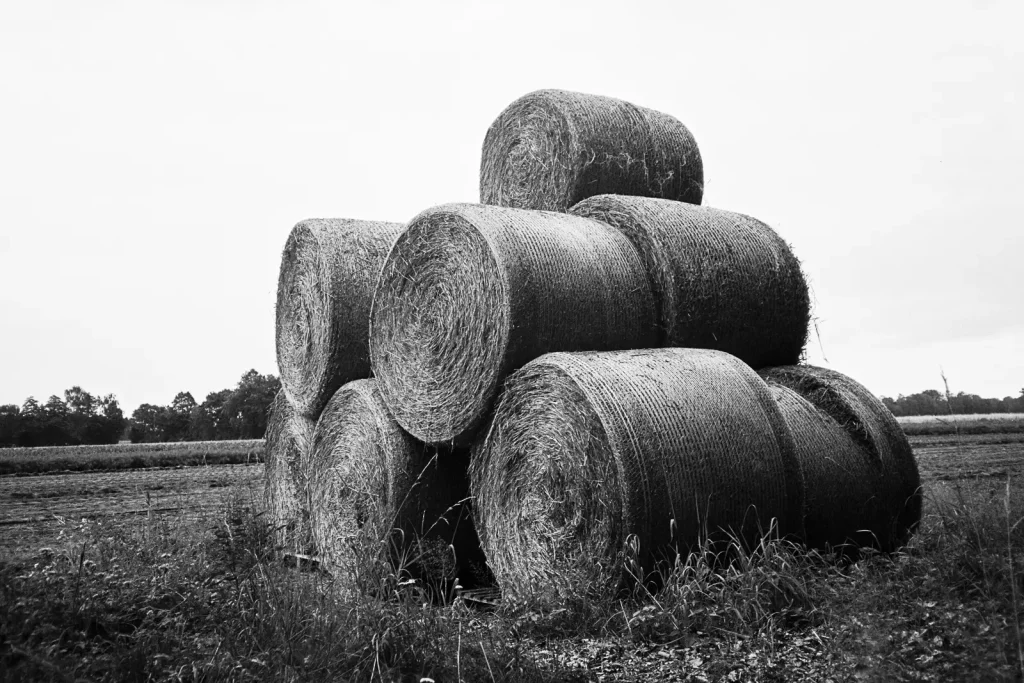
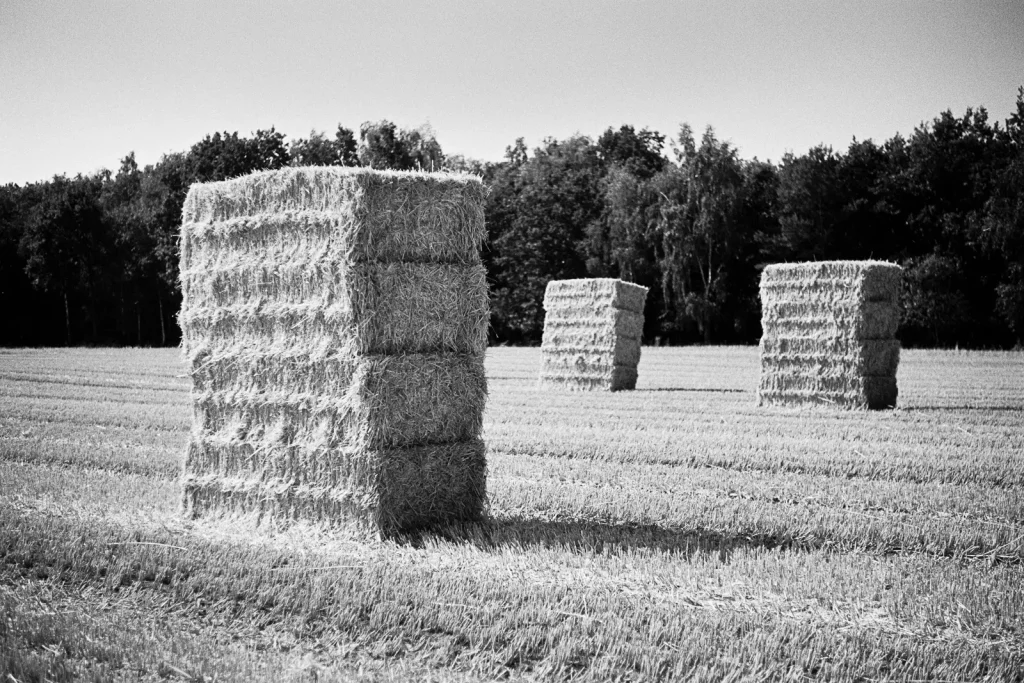
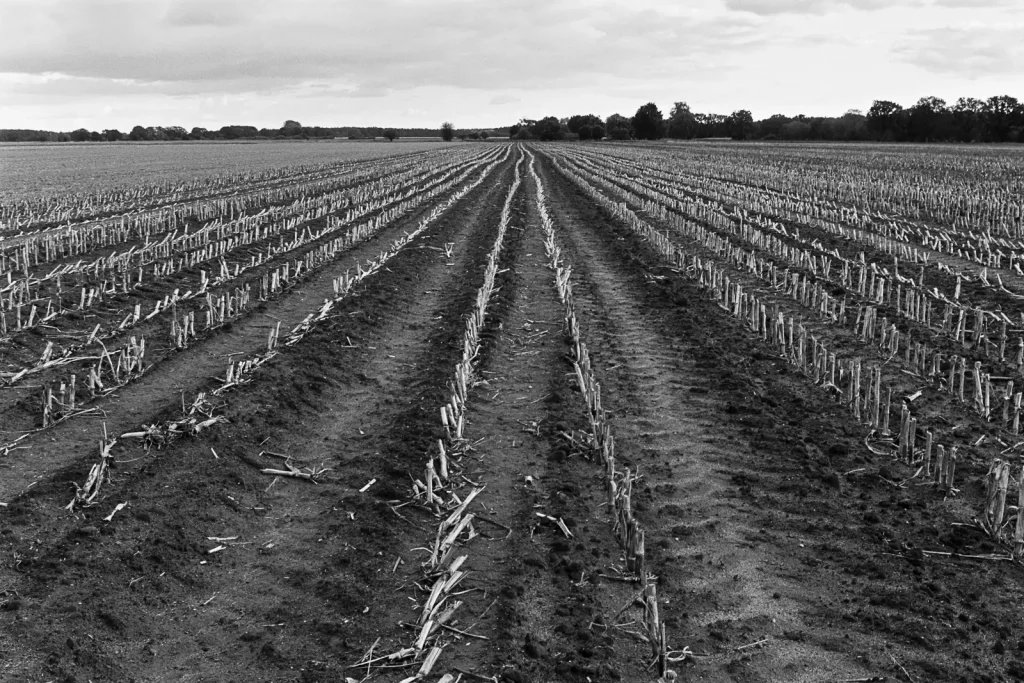
Today, biogas plants are a rather common sight in (German) agricultural landscapes. These facilities produce flammable gases (e. g., methane) by digesting organic material in the absence of oxygen. The digestion takes place in large, circular tanks made of concrete. The tanks are covered by flexible tarpaulins that are inflated by the gas formed inside. These bloated tops give the biogas plants a funny appearance. For me, they look like an agricultural-type of space colony.
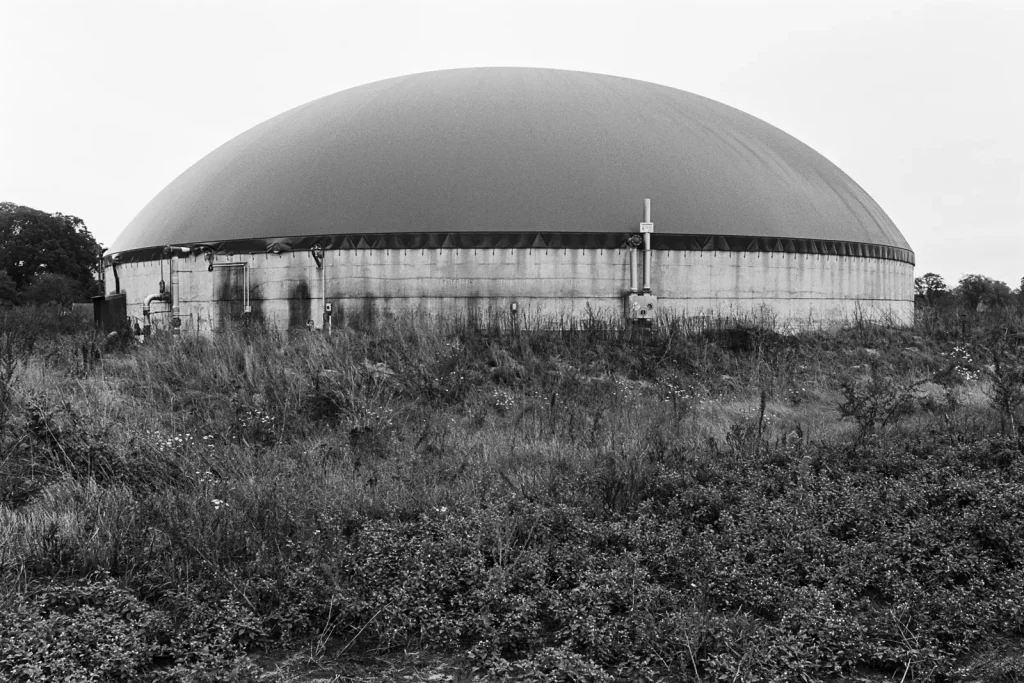
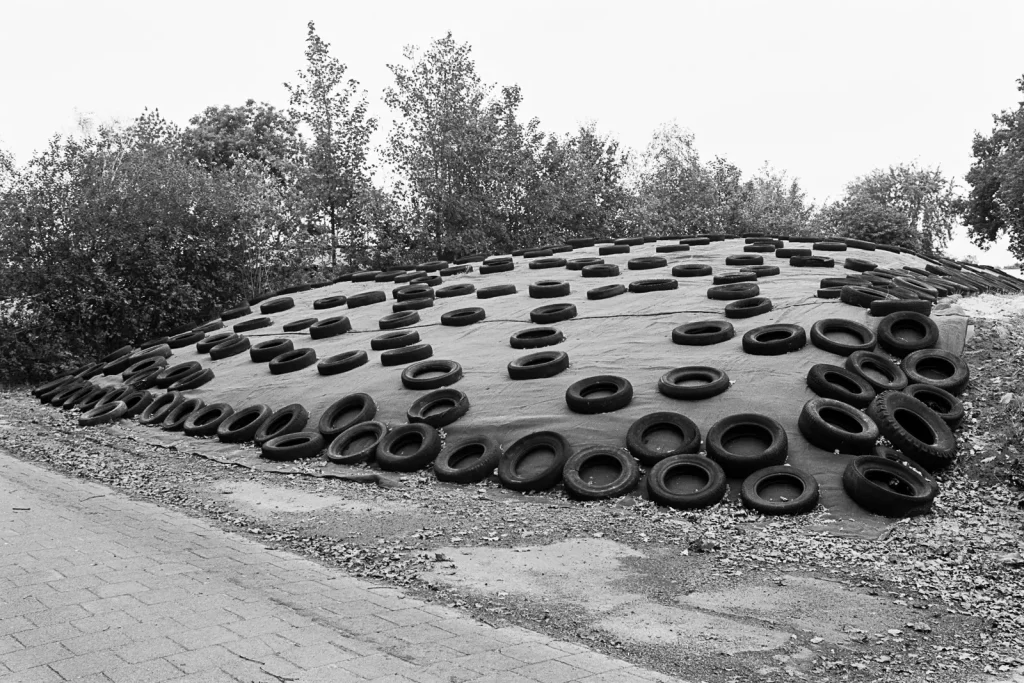
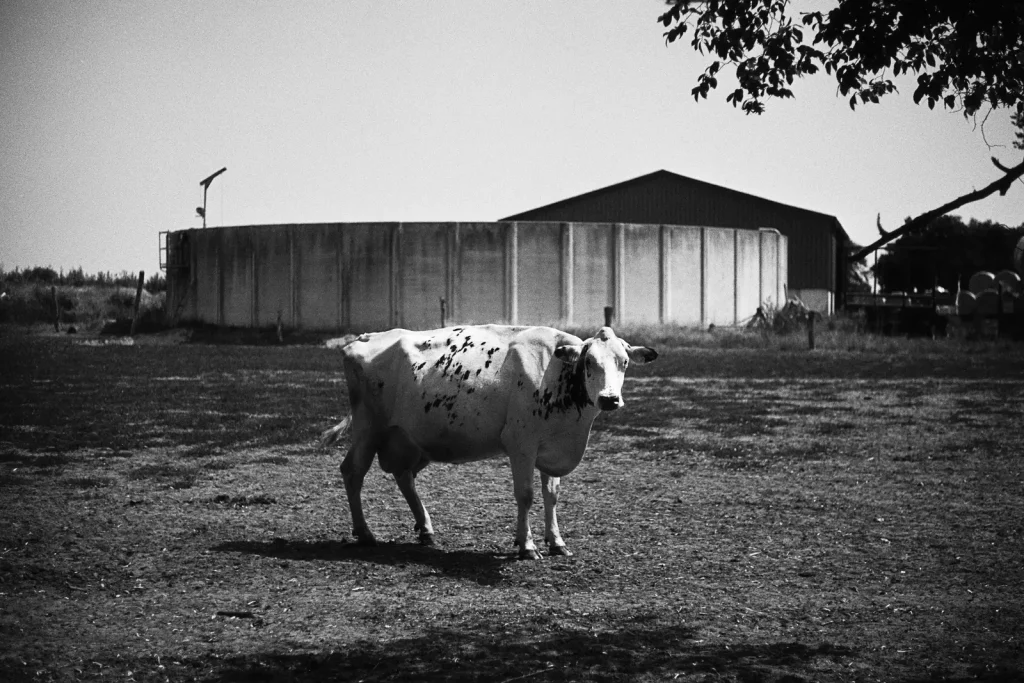
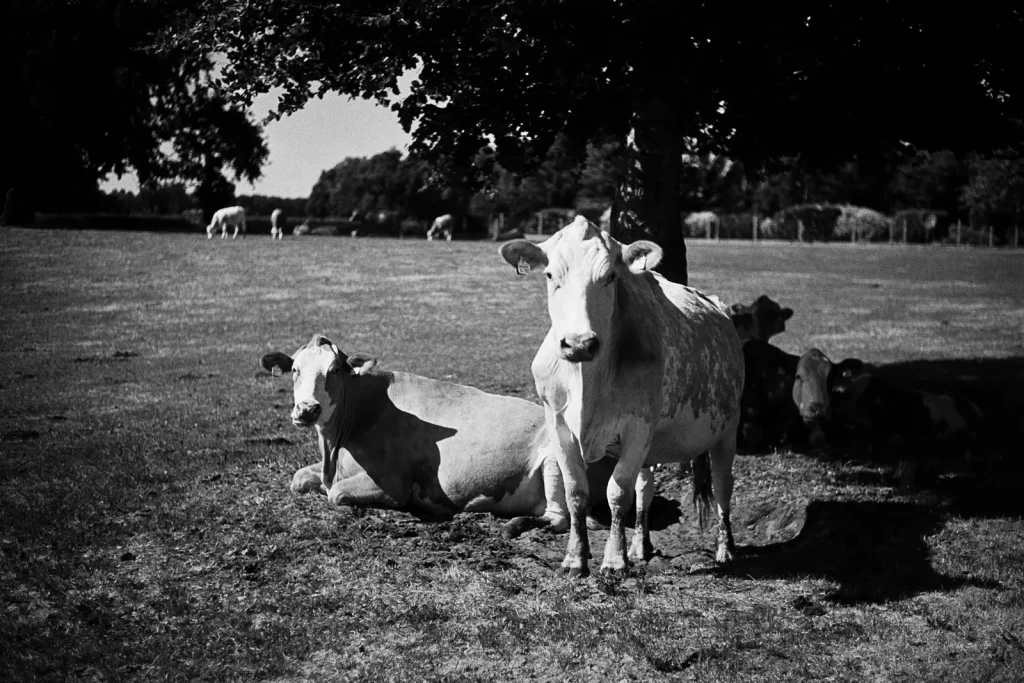
Technoid Things
One type of subject that particularly thrills me is what I call “technoid things”. By this term I mean all kinds of agricultural equipment and machinery. Preferably, these things stand left alone amidst the landscape. There were times when I rode a bike for hours searching for lost harvesters. But why do these machines attract me so much? Maybe because they are the perfect symbol for the industrial traits of this landscape? Or because they give a strong contrast to the natural entities like trees, bushes or grasses? Another reason could be the (to me) unfamiliar shapes and mechanisms of these apparatuses. Fortunately, they are exposed to my eyes, in contrast to the machinery hidden in industrial plants (which could probably be even more exciting than the agri tech).
It always intrigues me when photographers practice something I would describe as a distant observation: to show the immediate traces humans left on their surroundings – but without showing the humans themselves. As already mentioned in an earlier piece, I am a great admirer of Heinrich Riebesehl, a German photographer from the post-war era. In the late 1970s, Riebesehl built up a comprehensive series of the agricultural landscapes he found in northern Germany (where I too come from). These unpretentious black-and-white prints have been providing me with inspiration for a long time. There is an interesting news article on occasion of Riebesehl’s death in 2010 – unfortunately, in German only.
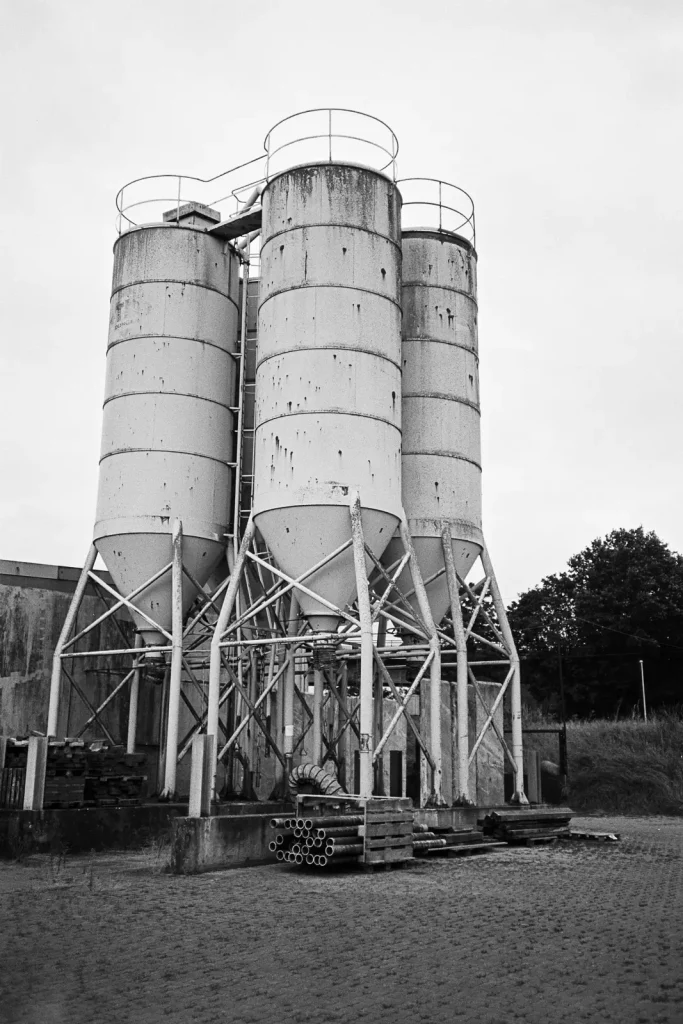
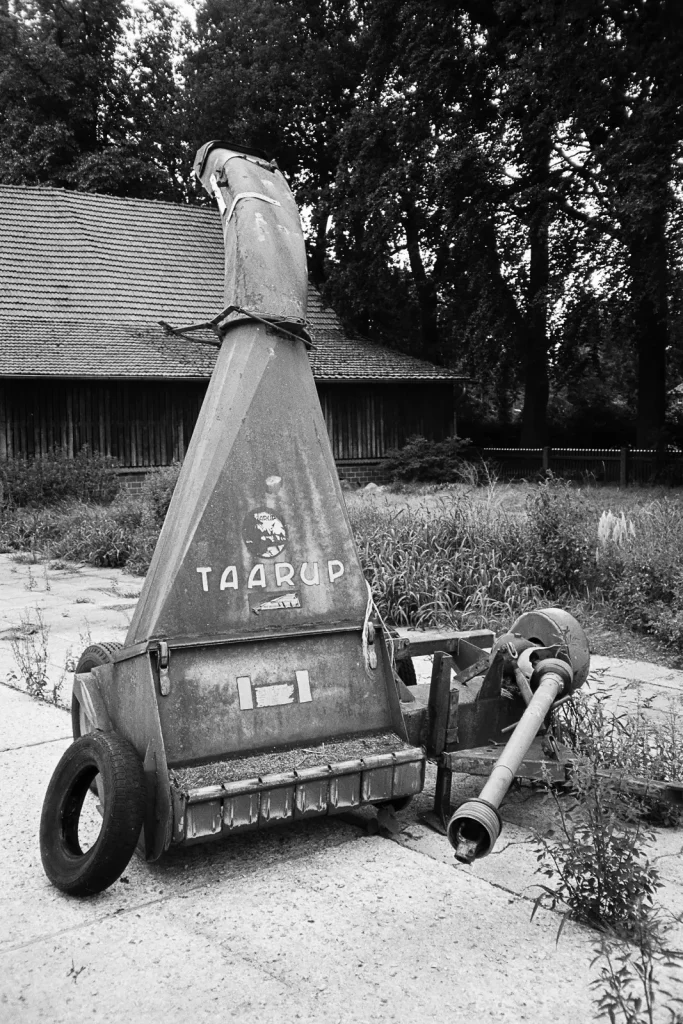
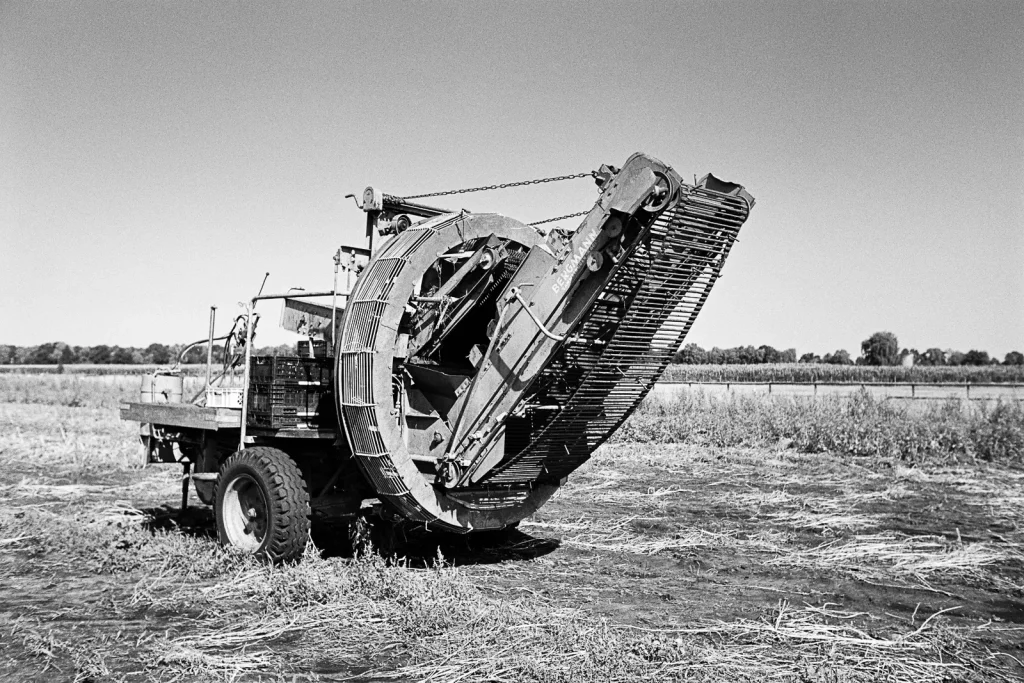
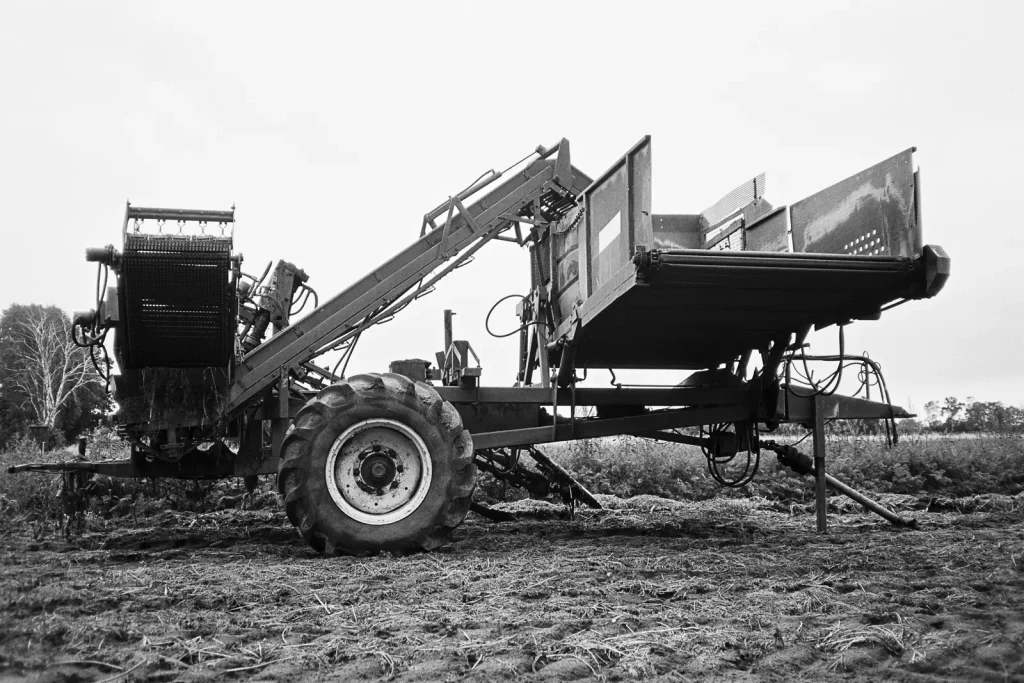
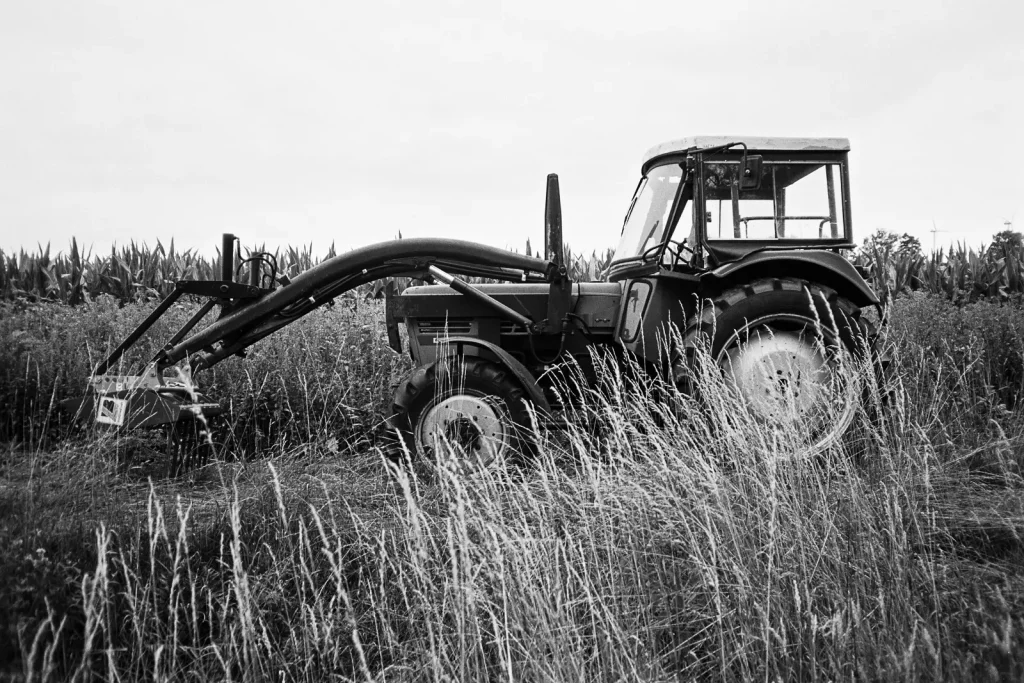
Closing Remarks
As mentioned in a previous post, I’m mostly seeking places that provide the right balance between novelty and familiarity. This is what I encountered at the Hämelhausen area. Albeit I spend only a few days during the year at this stretch, I feel quite well acquainted with it. On the other hand, I still discover numerous new things during each visit.
I truly like the agricultural landscapes found in northern Germany. With my photographs, I wanted to express this fondness. However, I shy away from doing this in a flattering, postcard-ish way. By the way: make sure to check out Steven’s article dealing with the Japanese countryside!
Thanks for reading.
Share this post:
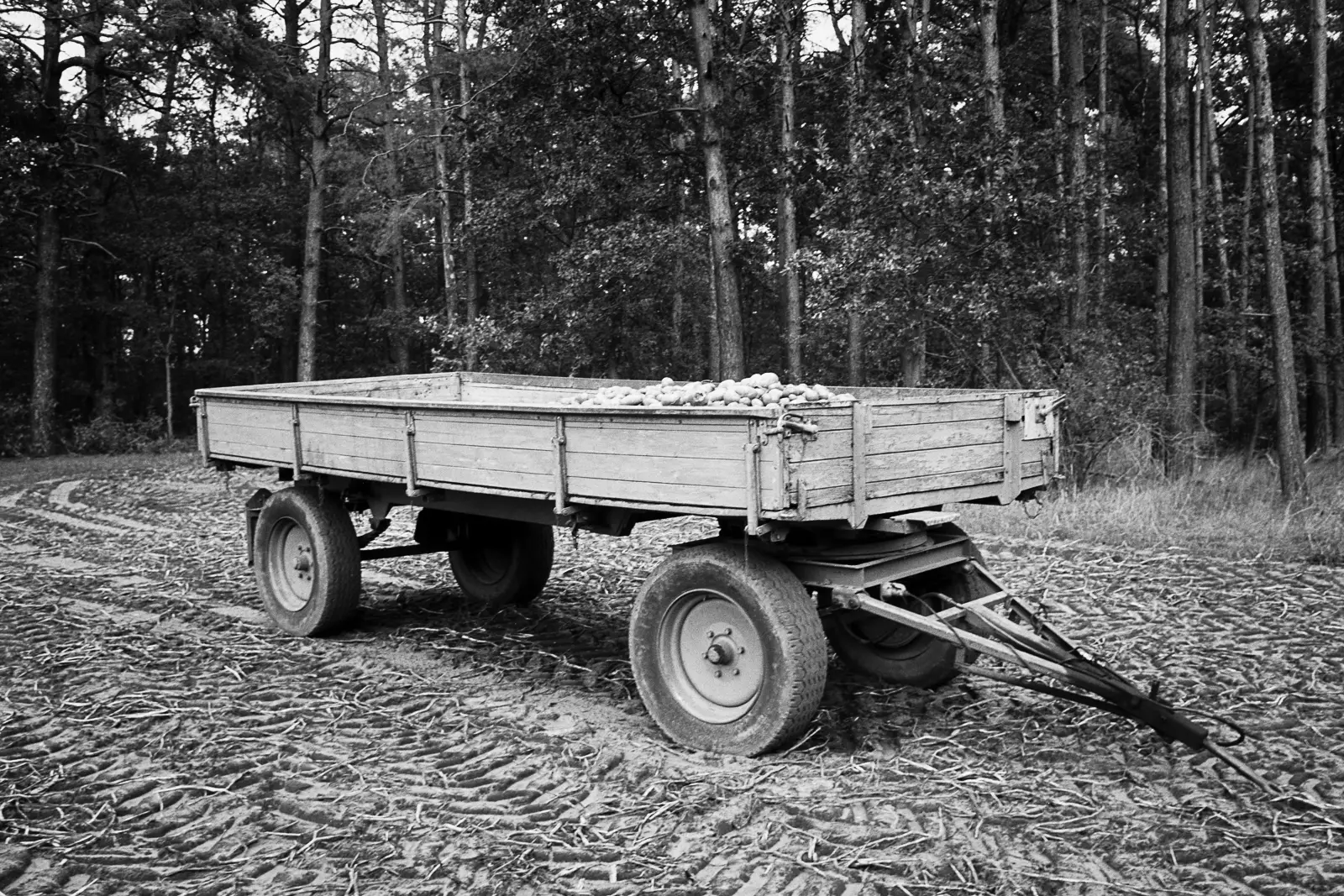








Comments
Pierre-Alix Favillier on Agricultural Landscapes – by Christian Schroeder
Comment posted: 12/12/2019
Comment posted: 12/12/2019
Steven Bleistein on Agricultural Landscapes – by Christian Schroeder
Comment posted: 12/12/2019
Comment posted: 12/12/2019
Duncan on Agricultural Landscapes – by Christian Schroeder
Comment posted: 12/12/2019
Comment posted: 12/12/2019
Alan Withington on Agricultural Landscapes – by Christian Schroeder
Comment posted: 12/12/2019
Comment posted: 12/12/2019
Roger B. on Agricultural Landscapes – by Christian Schroeder
Comment posted: 12/12/2019
Comment posted: 12/12/2019
Robin Gray on Agricultural Landscapes – by Christian Schroeder
Comment posted: 13/12/2019
The Peat Bog, Impressions from Another World – by Christian Schroeder - 35mmc on Agricultural Landscapes – by Christian Schroeder
Comment posted: 28/04/2020